Do you want to get the most out of raising chickens and eggs for a living? In this cutthroat market, creating a comprehensive business strategy is essential to success. We’ll look at practical ways to improve your chicken egg farming business plan and raise your chances of success in this article. We’ll dive into crucial actions to increase the production and profitability of your farm, from resource allocation to market analysis.
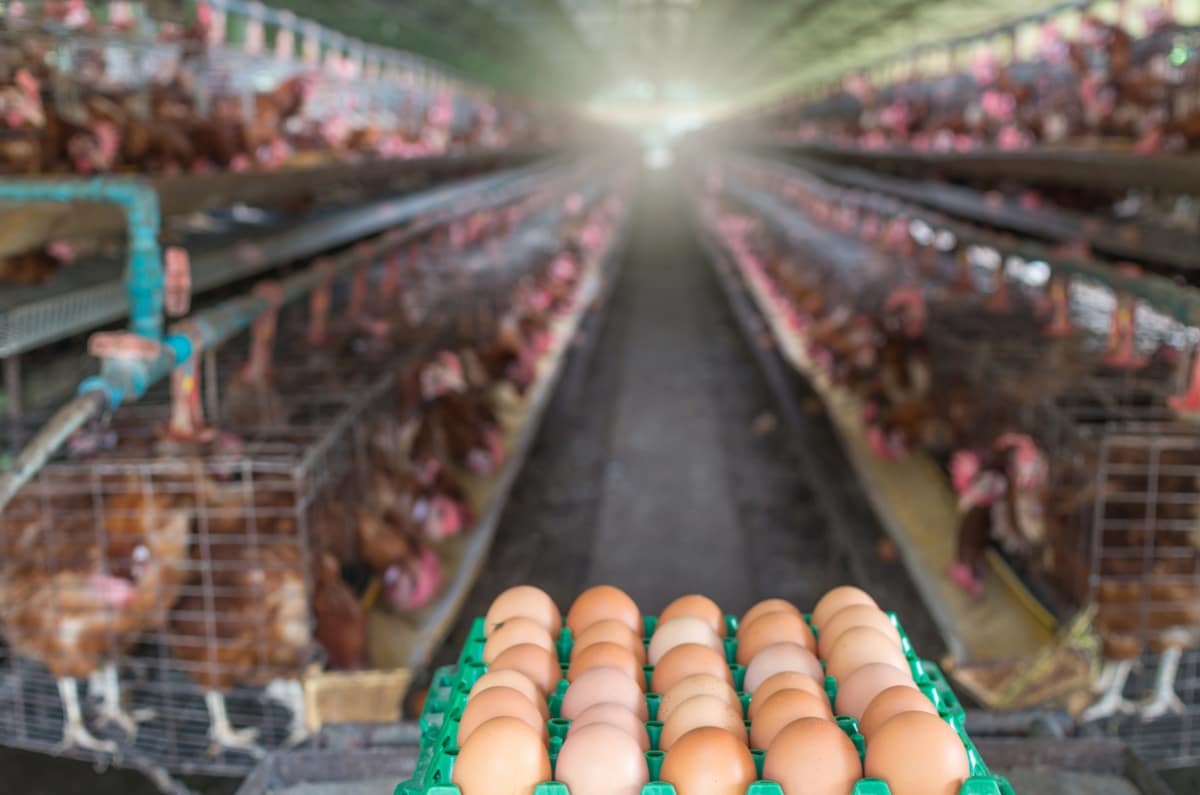
Poultry Egg Farm Business Plan
Conducting In-Depth Market Research
- Industry Size and Trends: Analyze the size and trajectory of the egg farming industry, including recent trends and forecasts.
- Market Demand Analysis: Understand the demand for eggs, considering factors such as population growth, dietary trends, and consumer preferences.
- Pricing and Profitability Assessment: Evaluate pricing structures within the industry and assess the potential profitability of your venture.
- Emerging Market Trends: Stay abreast of evolving consumer preferences, technological advancements, and regulatory changes shaping the industry landscape.
Identifying Target Customers and Their Preferences
- Market Segmentation by Segment your target market based on demographics, geographic location, and consumer behaviors.
- Understanding Customer Preferences: Gain insights into the specific requirements and preferences of your target customers regarding egg types, packaging, and farming practices.
- Niche Market Opportunities: Explore niche markets, such as organic or pasture-raised eggs, and tailor your offerings to meet specialized consumer demands.
Analyzing Competitors and Market Saturation
- Competitor Analysis: Identify key competitors in the egg farming sector, assess their strengths and weaknesses, and analyze market saturation.
- Unique Selling Proposition (USP) Development: Differentiate your egg business by identifying a USP that sets you apart from competitors.
- Gap Analysis: Identify gaps in the market and opportunities for innovation or specialization to address unmet consumer needs.
Developing a Comprehensive Business Model and Revenue Streams
- Value Proposition Definition: Define your value proposition by articulating the unique benefits and attributes of your eggs and related products.
- Pricing Strategy: Establish competitive yet profitable pricing strategies based on production costs, market dynamics, and consumer value perception.
- Diversifying Revenue Streams: Explore additional revenue streams beyond egg sales, such as ancillary products, farm tours, or agritourism experiences.
Determining Necessary Infrastructure, Resources, and Equipment
- Infrastructure Planning: Assess the infrastructure requirements for your egg farm, including housing, facilities, and land resources.
- Resource Allocation: Secure adequate resources, including water, electricity, and land, to support your farming operations.
- Equipment Investment: Invest in essential equipment and machinery for egg production, processing, and packaging to ensure efficiency and productivity.
In case you missed it: Ultimate Guide to Raising Dominique Chickens: Breeding, Feeding, Egg-Production, and Care
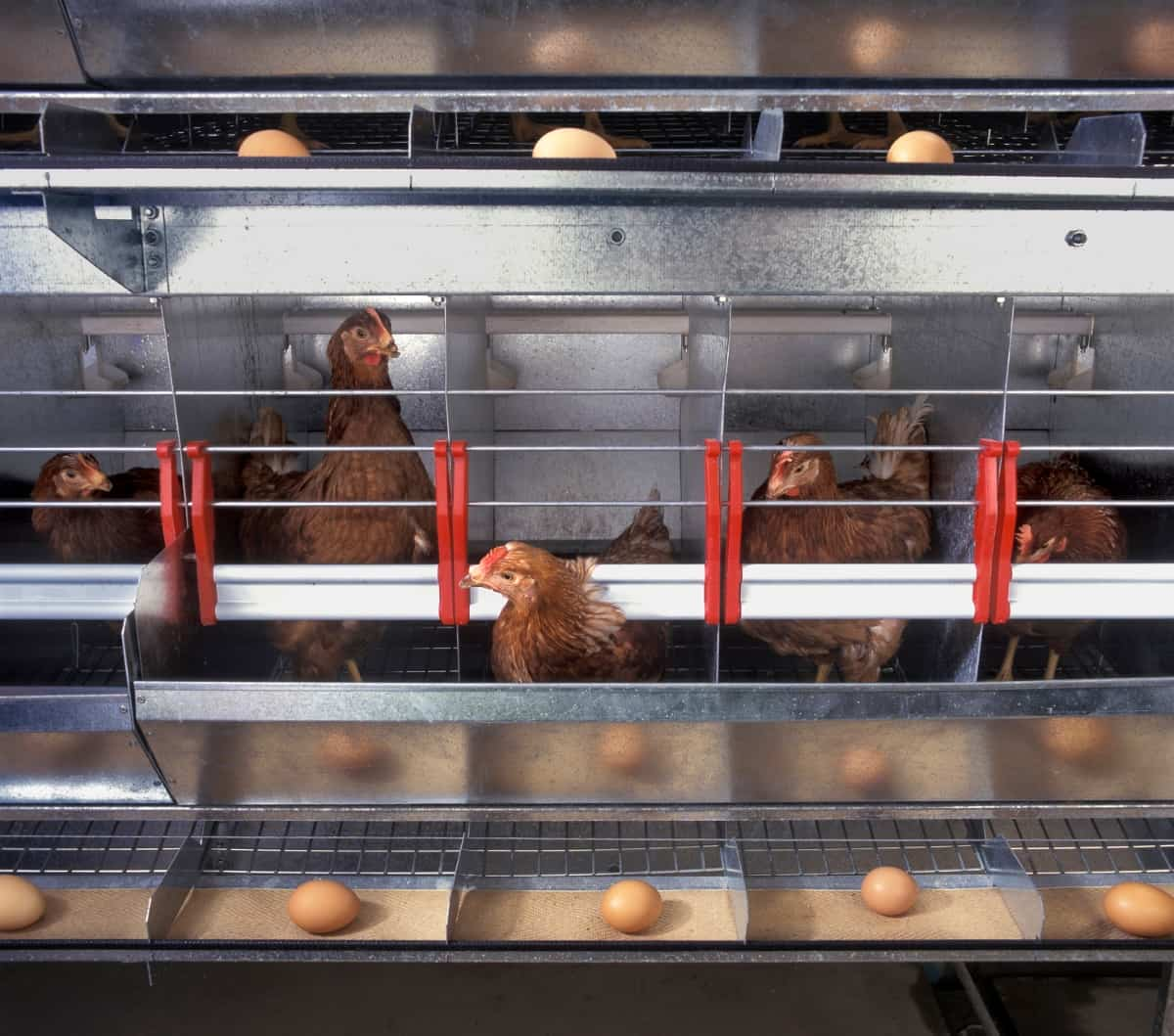
Assessing Legal and Regulatory Requirements
- Licensing and Permits: Obtain necessary licenses, or egg farming operations, complying with local, state, and federal regulations.
- Zoning and Land Use Compliance: Ensure compliance with zoning regulations and land use restrictions governing agricultural activities.
- Food Safety and Animal Welfare: Adhere to food safety standards and animal welfare regulations to maintain product quality and ethical farming practices.
Calculating Startup and Ongoing Operational Costs
- Startup Expenses: Estimate initial startup costs, including land acquisition, construction, equipment purchases, and regulatory compliance.
- Ongoing Operational Costs: Project ongoing expenses such as feed, labor, utilities, maintenance, and marketing to maintain profitability and sustainability.
- Financial Projections: Develop comprehensive financial projections to assess the financial feasibility and viability of your egg farming venture.
Defining Marketing and Sales Strategies
- Brand Positioning: Position your brand effectively by highlighting your unique selling points and conveying value to target customers.
- Digital Marketing Tactics: Leverage digital channels like social media, websites, and email marketing to reach and engage with your audience.
- Distribution Channels: Explore various distribution channels, including direct-to-consumer sales, partnerships with retailers, and participation in farmers’ markets.
- Promotional Initiatives: Implement promotional campaigns, discounts, and loyalty programs to drive sales and foster customer loyalty.
Building a Strong Support Network and Seeking Expert Advice
- Networking and Collaboration: Connect with industry peers, mentors, and experts to gain valuable insights, support, and guidance.
- Professional Consultation: Seek advice from agricultural professionals, legal advisors, and business consultants to navigate challenges and optimize operations.
- Continuous Learning and Adaptation: Stay informed about industry trends, best practices, emerging technologies to adapt and innovate in response to changing market dynamics.
Best Poultry Egg Breeds
ISA Brown
This is a hybrid breed developed in France in 1978. It is one of the most productive egg layers in the world, averaging 280 eggs per year. The eggs are medium-sized and brown-colored. The ISA Brown is a hardy, friendly, and easy-to-manage breed that adapts well to different climates and environments.
Leghorn
This is an old and well-known breed that originated in Italy. It is a prolific egg layer, producing around 250 eggs per year. The eggs are medium-sized and white-colored. The Leghorn is a shy, independent, and flighty breed that prefers free-range conditions and requires adequate space and fencing.
Rhode Island Red
This is a dual-purpose breed that originated in the US. It is a reliable egg layer, producing around 250 eggs per year. The eggs are medium-sized and brown-colored. The Rhode Island Red is a friendly, tough, and hardy breed that can tolerate various climates and forage well.
Sussex
It is another dual-purpose breed that originated in England. It is a consistent egg layer, producing around 250 eggs per year. The eggs can be brown or white, depending on the variety. The Sussex is a tame, gentle, and curious breed that can be easily handled and fed by hand.
Ameraucana
This is a unique breed that originated in the US. It is also known as the “Easter Egg Chicken” because it lays multicolored eggs that can be blue, green, pink, or brown. It produces around 200 eggs per year. The Ameraucana is a friendly, active, and intelligent breed that has a distinctive appearance with muffs and beards.
In case you missed it: Mastering the Art of Raising Jersey Giant Chickens: Care, Feeding, and More
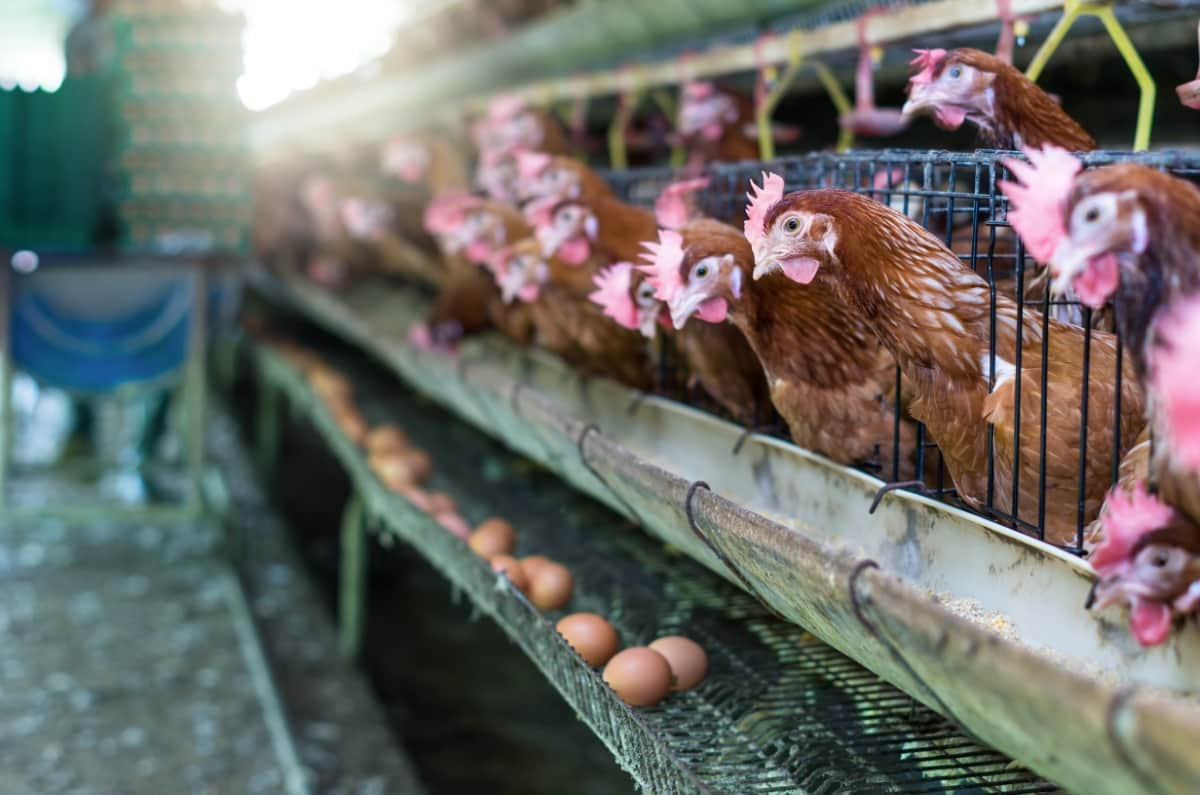
Setup Cost for Poultry Egg Farm Business
The setup cost for a poultry egg farm depends on factors such as the scale of operation, the type of housing system, the equipment required, the number of birds purchased, the feed and health expenses, and the legal and regulatory fees. Depending on these factors, the setup cost can vary from $10,000 to $500,000+. According to some sources, the approximate setup costs for different scales of poultry egg farm business in India are as follows:
- Small-scale: Rs. 50,000 to Rs. 1.5 lakh
- Medium-scale: Rs. 1.5 lakh to Rs. 3.5 lakh
- Large-scale: Rs. 7 lakh or more
These costs include expenses such as land acquisition or rent, construction of sheds or cages, purchase of chicks or eggs, installation of feeders and drinkers, provision of heating and ventilation systems, vaccination and medication of birds, registration and licensing of business, etc.
Optimizing Your Poultry Egg Farming Business Plan
Key Partnerships
Establishing strategic partnerships is crucial for a successful poultry egg farming venture. These partnerships may include collaborations with poultry equipment suppliers, veterinary services, feed suppliers, and online learning platforms. By leveraging these partnerships, farmers can access essential resources and expertise to enhance their operations and ensure the health and productivity of their poultry flock.
Key Activities
The core activities of a poultry egg farming business encompass poultry management, egg production, online education, and marketing and sales. By focusing on these activities, farmers can effectively raise and manage their poultry flock, produce high-quality eggs, educate aspiring and existing farmers through online platforms, and promote their products to target customers.
Key Resources
- Poultry housing and infrastructure.
- A healthy poultry flock.
- An online learning platform.
- Various marketing and sales channels.
These resources are essential for ensuring the well-being of the poultry flock, providing educational resources to farmers, and reaching customers through multiple channels.
Value Proposition
The value proposition of a poultry egg farming business lies in offering comprehensive educational resources, high-quality poultry egg products, convenience, and community support. By delivering on these promises, farmers can attract and retain customers, differentiate their products from competitors, and build a loyal customer base.
Customer Segments
Targeting the right customer segments is crucial for the success of a poultry egg farming business. These segments may include aspiring and existing poultry farmers as well as consumers seeking high-quality eggs. By understanding these customer segments’ needs and preferences, farmers can tailor their products and services to effectively meet their demands.
Channels
Utilizing multiple marketing and sales channels is essential for reaching and engaging with target customers. These channels may include the farm’s website, social media platforms, partnerships with retailers, and direct sales channels. By leveraging these channels, farmers can maximize their reach and visibility, attract new customers, and drive sales.
Customer Relationships
Building strong customer relationships is vital for fostering loyalty and trust. This can be achieved by providing educational support, gathering feedback, fostering a sense of community among learners and consumers. By engaging with customers and addressing their needs effectively, farmers can build long-lasting relationships and ensure repeat business.
Revenue Streams
Diversifying revenue streams is essential for ensuring the financial sustainability of a poultry egg farming business. These streams may include revenue from educational resources, such as online courses and webinars, and revenue from poultry egg sales. By diversifying their revenue streams, farmers can reduce dependency on a single source of income and mitigate risks.
Cost Structure
Managing costs effectively is crucial for maximizing profitability and ensuring the viability of a poultry egg farming business. Key cost considerations may include poultry management costs, content development costs, and marketing expenses. By carefully managing these costs and optimizing resource allocation, farmers can improve their financial performance and achieve their business objectives.
Key Metrics
Tracking key metrics is essential for monitoring the performance and progress of a poultry egg farming business. These metrics may include learner engagement, course completion rates, poultry egg production volumes, and customer satisfaction levels. By regularly monitoring these metrics, farmers can identify areas for improvement, make decisions, and drive continuous growth and innovation.
In case you missed it: How to Raise Welsummer Chickens: A Comprehensive Guide for Beginners
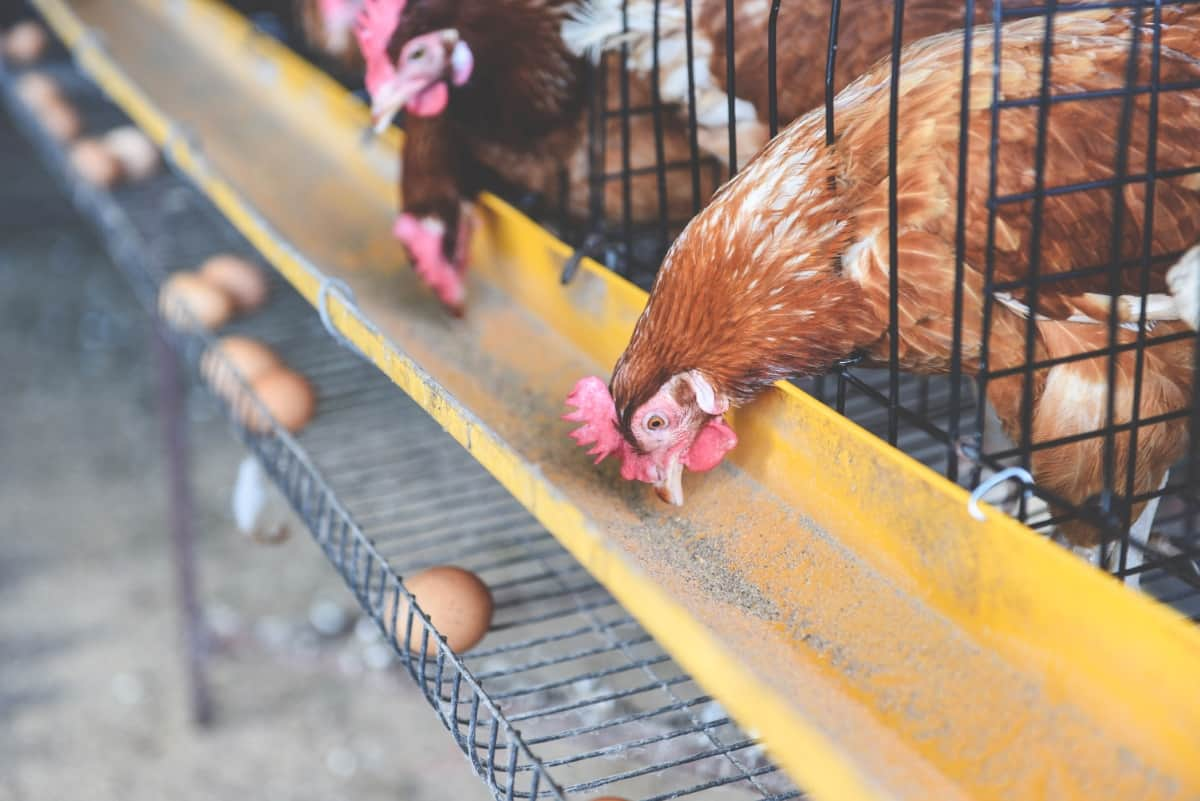
Tips for Crafting a Comprehensive Poultry Egg Farm Business Plan
A summary of your poultry farm’s objectives, plans, and financial predictions may be found in your business plan for chicken egg farms. It supports proactive planning, financial security, risk management, and progress tracking. A thorough business plan for a chicken egg farm should include the following sections:
Executive Summary: This is a synopsis of your business plan that includes important details like your company name, address, mission and vision statement, offerings, target market and customer demographics, financial projections, and funding needs.
Business Description: This is a thorough overview of your company that includes information about your aims and objectives, income sources and business model, ownership information, and legal setup.
Market analysis: This is examination of market and industry developments that impact your company. It contains data on market size and development potential, customer preferences and demand, market segmentation, and differentiation tactics.
Products and Services: This is an overview of the meat, eggs, and specialty items that you provide from your chickens. It draws attention to the qualities and advantages of your items as well as their characteristics.
Marketing and Sales Strategy: This outlines your approach to reaching your target market with product promotions and sales. It addresses topics like advertising techniques, distribution networks, and price strategies.
Management and Organization: This section outlines your strategy for effectively managing your chicken farm’s activities. It addresses topics such as staff development and training, organizational structure, roles and duties, and human resources.
Financial Projections: This is a projection of your cash flow statement, balance sheet, income statement for the next three to five years. It displays your anticipated earnings, costs, and sales, in addition to your break-even point and return on investment.
Funding and Financing: This section explains how much capital you will need to obtain and how much you will need to establish and operate your chicken farm. It includes topics including loan terms and conditions, equity or debt finance, and funding sources.
Risk Analysis and Mitigation: This entails determining and evaluating the possible dangers and difficulties that might impact your poultry farming enterprise and how you intend to address them. Risks related to the market, operations, finances, law, and other areas are covered.
Implementation Plan: This is a schedule of the major tasks and deadlines you must meet to start and expand your chicken farm company. It addresses things like buying property, building, setting up equipment, buying birds, and advertising campaigns.
- The life span of Laying Hens is typically 5 to 10 years, with peak egg production between 1 and 2 years.
- Egg Production per Hen: Around 250 to 300 eggs annually, influenced by breed, age, and environment.
- Maintaining Biosecurity: Implement limited access, biosecurity signage, proper footwear and clothing, sanitation protocols, pest control measures, waste disposal practices, quarantine and testing for new birds, and ongoing training and education for staff.
- Marketing Channels for Egg Sales: Explore options like local farmers’ markets, on-farm retail, community-supported agriculture (CSA), online platforms, partnerships with grocery stores, collaboration with restaurants and cafes, and wholesale distribution. Tailor strategies to meet the preferences and needs of the target market.
In case you missed it: How to Raise Wyandotte Chickens: A Profitable Wyandotte Farming for Beginners
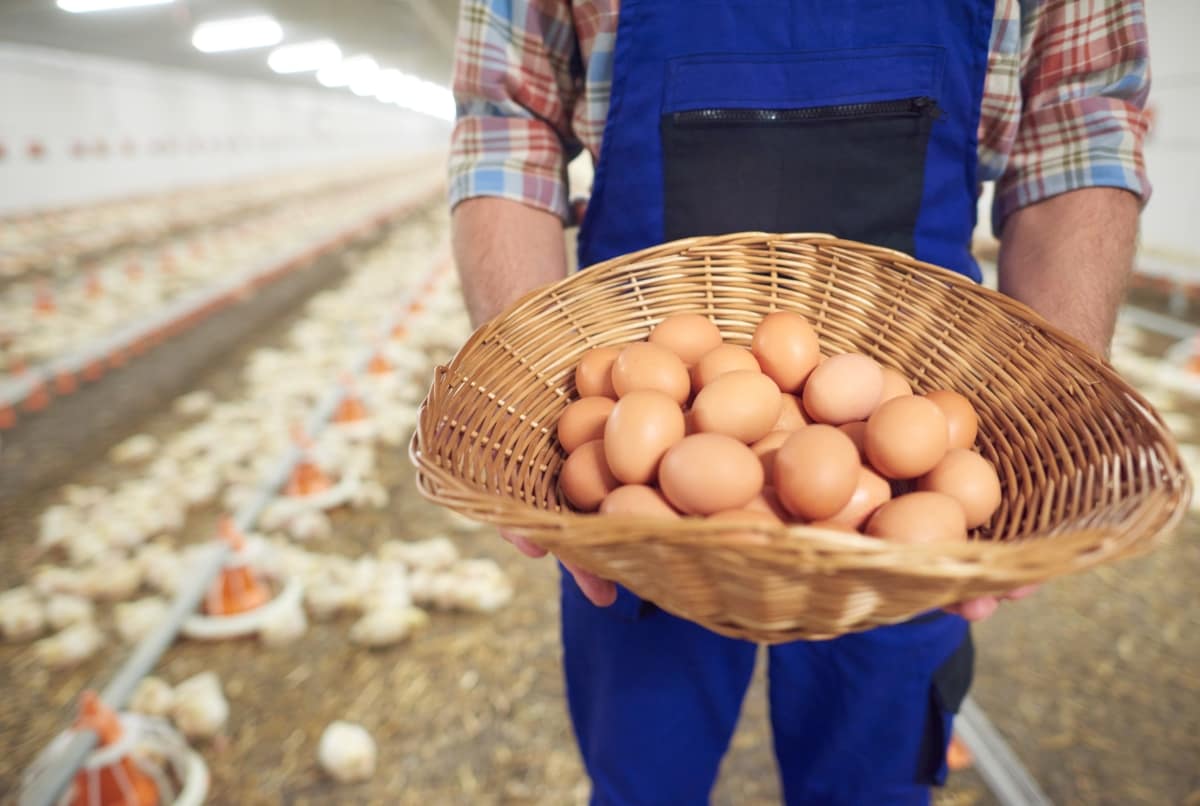
Conclusion
Implementing these strategies can enhance productivity, ensure biosecurity, and effectively reach target markets for poultry egg farm businesses. Focusing on quality, efficiency, and customer satisfaction, these approaches can contribute to the operation’s success and sustainability.
- Types of Pesticides Used in Agriculture: A Beginner’s Guide
- Economical Aquaculture: A Guide to Low-Budget Fish Farming
- 15 Common Planting Errors That Can Doom Your Fruit Trees
- How to Make Houseplants Bushy: Effective Tips and Ideas
- Innovative Strategies for Boosting Coconut Pollination and Yield
- Pollination Strategies for Maximum Pumpkin Yield
- The Complete Guide to Chicken Fattening: Strategies for Maximum Growth
- Natural Solutions for Tulip Problems: 100% Effective Remedies for Leaf and Bulb-Related Issues
- Revolutionizing Citrus Preservation: Towards a Healthier, Greener Future
- Natural Solutions for Peony Leaf and Flower Problems: 100% Effective Remedies
- Maximizing Profits with Avocado Contract Farming in India: A Comprehensive Guide
- Natural Solutions for Hydrangea Problems: 100% Effective Remedies for Leaf and Flowers
- The Ultimate Guide to Choosing the Perfect Foliage Friend: Bringing Life Indoors
- From Sunlight to Sustainability: 15 Ways to Use Solar Technology in Agriculture
- The Ultimate Guide to Dong Tao Chicken: Exploring from History to Raising
- The Eco-Friendly Makeover: How to Convert Your Unused Swimming Pool into a Fish Pond
- Mastering the Art of Delaware Chicken Farming: Essentials for Healthy Backyard Flocks
- 20 Best Homemade Fertilizers for Money Plant: DIY Recipes and Application Methods
- How to Craft a Comprehensive Free-Range Chicken Farming Business Plan
- Brighten Your Flock: Raising Easter Egger Chickens for Beauty and Bounty
- How to Optimize Your Poultry Egg Farm Business Plan with These Strategies
- Subsidy for Spirulina Cultivation: How Indian Government Schemes Encouraging Spirulina Farmers
- Ultimate Guide to Raising Dominique Chickens: Breeding, Feeding, Egg-Production, and Care
- Mastering the Art of Raising Jersey Giant Chickens: Care, Feeding, and More
- Ultimate Guide to Raising Legbar Chickens: Breeding, Farming Practices, Diet, Egg-Production
- How to Raise Welsummer Chickens: A Comprehensive Guide for Beginners
- How to Protect Indoor Plants in Winter: A Comprehensive Guide
- Ultimate Guide to Grow Bag Gardening: Tips, Tricks, and Planting Ideas for Urban Gardeners
- Guide to Lotus Cultivation: How to Propagate, Plant, Grow, Care, Cost, and Profit
- Agriculture Drone Subsidy Scheme: Government Kisan Subsidy, License, and How to Apply Online
- Ultimate Guide to Raising Araucana Chickens: Breed Profile, Farming Economics, Diet, and Care
- Bringing Hydroponics to Classroom: Importance, Benefits of Learning for School Students
- Ultimate Guide to Raising Polish Chickens: Breed Profile, Farming Economics, Diet, and Care
- Ultimate Guide to Raising Australorp Chickens: Profile, Farming Economics, Egg Production, Diet, and Care
- Silkie Chicken Farming: Raising Practices, Varieties, Egg Production, Diet, and Care
- Sussex Chicken Farming: Raising Practices, Varieties, Egg Production, Diet and Care